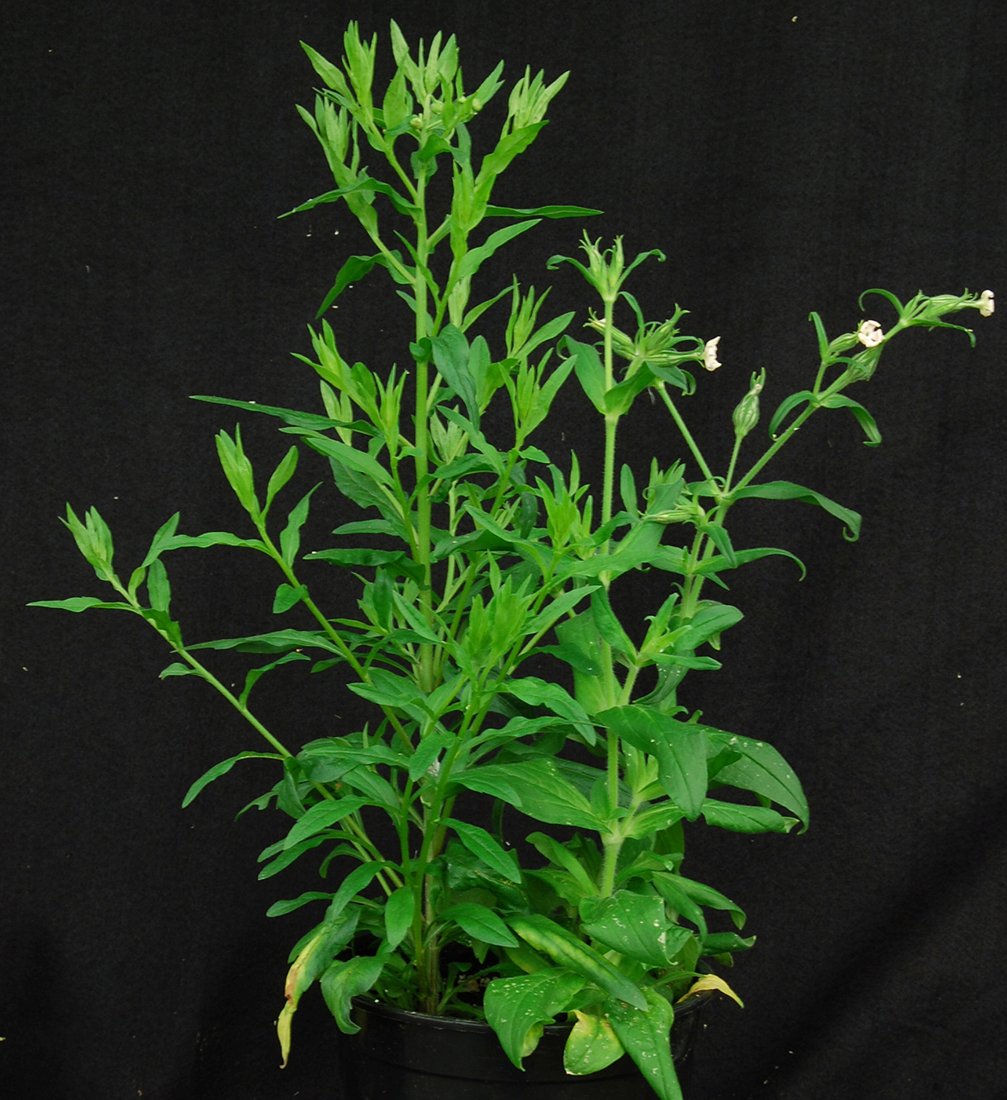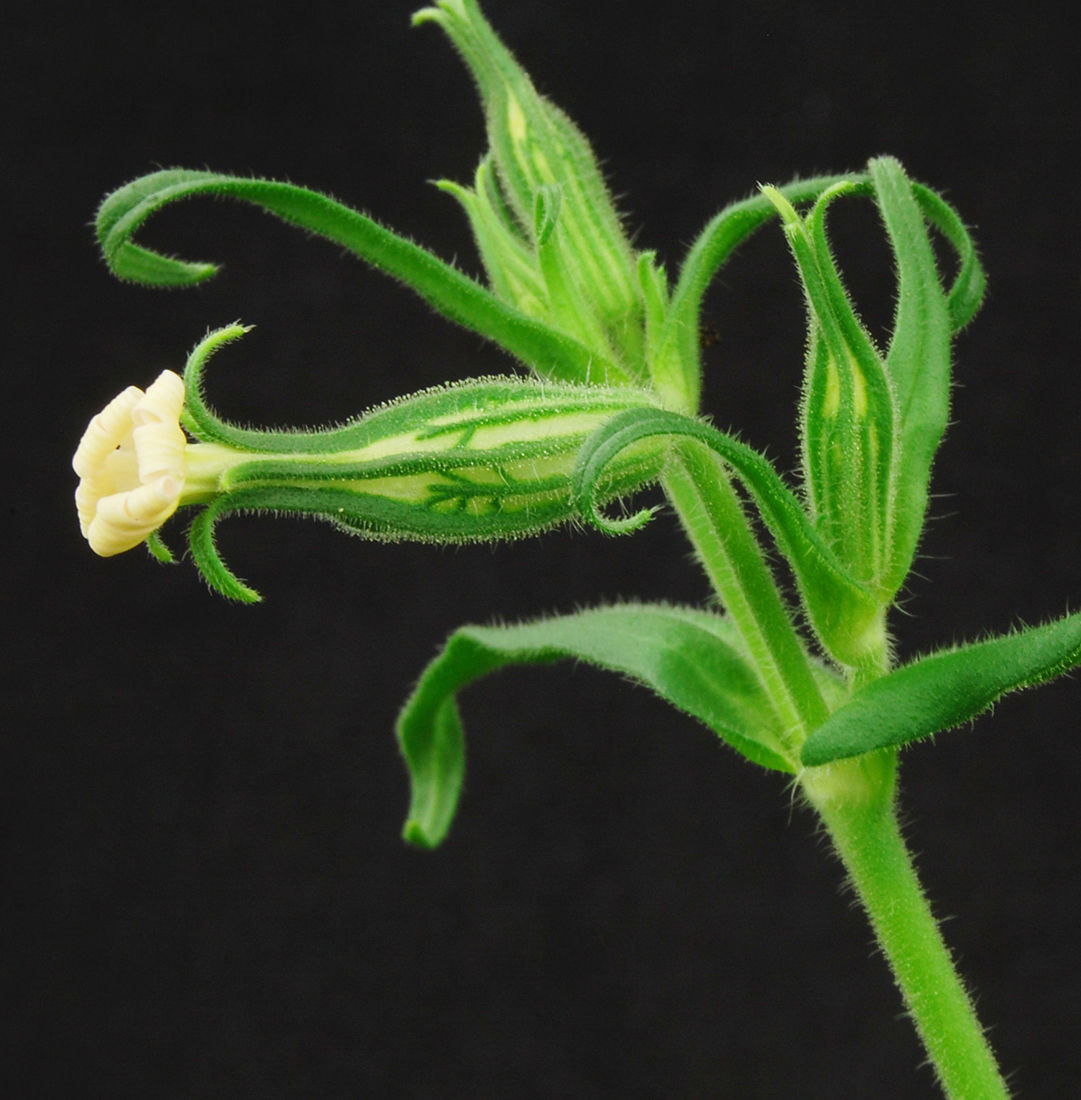Night-Flowering Catchfly
- Pink (Caryophyllaceae family):
- Silene noctiflora L.
- EPPO code:
- MELNO
- Other names:
- Sticky cockle
Species information
- Lifecycle:
- Annual, winter annual.
- Propagation:
- Reproduces by seed.
- Emergence:
- Night-flowering catchfly will germinate when soil temperatures are as low as 6° C and as high as 31° C (McNeill, 1980).
- Habitat:
- The plant is commonly found in pastures, waste areas and cultivated fields, as well as along roadsides.
- Competitiveness:
- A Swedish study found that Night-flowering catchfly had a relatively small influence on the yield of spring cereals and was considered benign (Boström et al., 2003).
Identification clues
Seedling
- Cotyledons:
- Oblong or club-shaped, tapering into a short stalk.
- Young leaves:
- Night-flowering catchfly’s first leaves are opposite, ovate and hairy. Young plants produce a rosette.
- Mature leaves:
- The plant’s mature leaves are opposite, ntire with smooth margins, tapering towards both ends, and have prominent veins. The leaves are densely hairy and sticky to the touch.
Mature plant
- Stem:
- The stem of night-flowering catchfly is erect and branchy with dense hair. The stem is sticky to touch.
- Flowers:
- The calyx is densely hairy and sticky with five prominent veins and five white, lobed petals.
- Seeds:
- Night-flowering catchfly’s seeds are kidney shaped and grayish-orange.
- Roots:
- Taproot with fine branches
Often mistaken for
I know it's not Bladder campion and White cockle because Night-flowering catchfly is very sticky to touch, especially the stem and calyx, while bladder campion and white cockle are not sticky at all.




Updated: January 13, 2023
Published: January 13, 2023